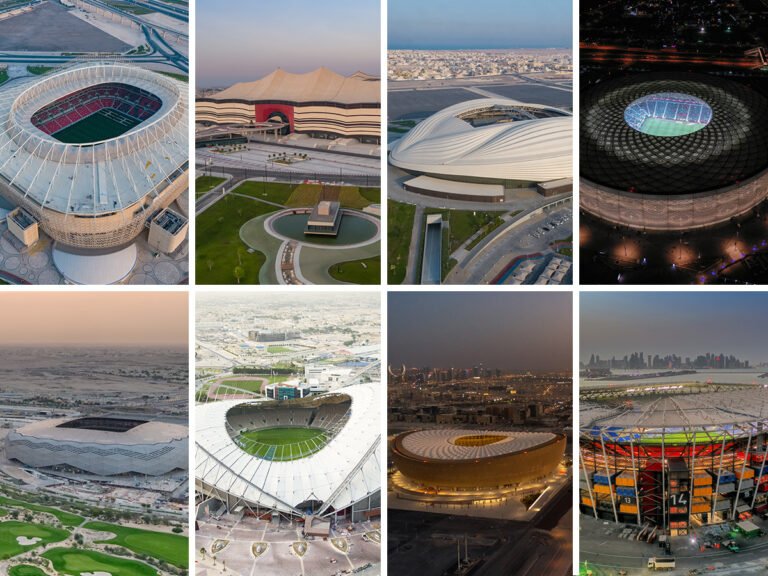
What Will Happen to Qatar’s Stadiums After the World Cup?
The eight FIFA World Cup stadiums in Qatar have done a great job hosting the games. Every World Cup stadium is unique in its way in terms of its build, capacity, materials used and more.
However, have you ever thought of what will happen to them once the World Cup is over?
The dismantling and distribution of almost 170,000 seats from the World Cup stadiums in Qatar will help developing countries build their sports infrastructure.
The 8 World Cup stadiums are:
Al Janoub Stadium
Lusail Stadium
Khalifa International Stadium
Stadium 974
Al Thumama Stadium
Al Bayt Stadium
Education City Stadium
Ahmad Bin Ali Stadium
Al Janoub Stadium:
Located in Al Wakrah, Al Janoub Stadium takes inspiration from the wind-filled sails of Qatar’s traditional dhow boats as a tribute to the fishing and pearl diving past of the location it’s situated in.
After the World Cup, the stadium’s 44,325 seats will be reduced to 20,000, and the extra seats will be donated to other sporting events around the world. The neighbourhood park and surrounding environment will be useful to the community for many years to come.
Lusail Stadium:
The interplay of light and shadow that characterises the fanar lantern inspired the design of this stadium. This stadium hosts matches throughout the tournament, including the opening and final games.
As part of Qatar’s commitment to sustainable development, the 80,000-capacity stadium will be converted into a one-of-a-kind community hub with schools, housing, shops, cafes, and health clinics after the World Cup.
Khalifa International Stadium:
This stadium honours Qatar’s sporting history as it has hosted many memorable events, matches, and other activities.
This stadium will be the home stadium of Qatar’s national team, Al Annabi, after the World Cup. The stadium’s capacity will remain at 45,857.
Stadium 974:
The inspiration for this stadium’s design came from the Gulf’s beacon of innovation and sustainability. Did you know that 974 is Qatar’s international dialling code, and that the stadium’s name comes from the number of containers used to build it? It is the World Cup’s “first fully” demountable stadium.
This stadium will be completely dismantled after the tournament, as it is currently. The materials used in its construction will be repurposed. In its place, a waterfront development with community facilities will be built.
Al Thumama Stadium:
The ‘gahfiya,’ a traditional cap worn by men and boys throughout the Arab world, inspired Al Thumama Stadium. Have you ever visited this stadium during a tournament?
The stadium has a capacity of 44,400 seats, which will be reduced to 20,000 after the tournament.
Al Bayt Stadium:
This stadium is designed to look like a bedouin tent and is inspired by the nomadic people who used to live in Qatar’s deserts.
This 68,895-seat stadium will be reduced to 32,000 seats after the World Cup and will become the home of Al Khor Sports Club.
Education City Stadium:
This stadium combines Islamic architecture’s rich history with modernity. It hosted World Cup games until the quarter-finals.
Following the World Cup, the stadium’s seating capacity will be reduced to 20,000 and converted into facilities for the Qatar Foundation community and the general public.
Ahmad Bin Ali Stadium:
The stadium’s outer facade is inspired by Qatar’s environment, including dunes, desert, flora, and fauna.
After the tournament, this 45,032-seat stadium will be reduced to nearly 20,000 seats, and the seats, along with the stadium’s upper tier, will be donated to football development projects around the world.